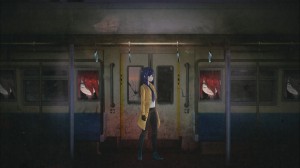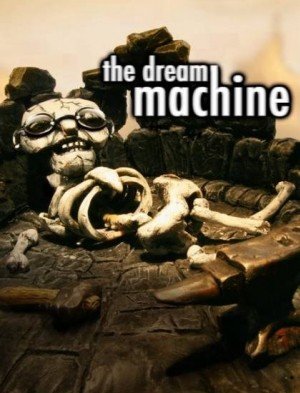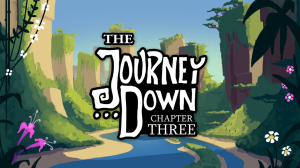Adventure in Serenia flashback review

As the unnamed protagonist of Adventure in Serenia, you’ve been tasked with rescuing the Princess Priscilla and return her to safety in the titular village. She has been kidnapped by the evil wizard Harlin, who is holding her captive in his castle beyond the mountains to the north. You must journey through the land to find her, traversing deserts, rivers, forests and finally the wizard’s keep. Everything about this game feels like a fairy tale, from the premise of rescuing the damsel in distress from the clutches of evil, to magic spells, to the characters you encounter such as giants and gnomes and talking snakes along the way. Unfortunately, nearly 40 years after it was initially released, it certainly shows its age in almost every respect.
A precursor to their flagship King’s Quest series, the second game Sierra On-Line (then called On-Line Systems) released after their massively successful Mystery House improved upon its predecessor’s successful formula by adding colour graphics for the first time in an adventure game. Originally developed in 1980 for the Apple II computer system as Wizard and the Princess, it was eventually ported to almost every system imaginable, but for the purposes of this review I played the IBM Boot Disk version (1982) through the DOSBox emulator. Sierra changed the name to Adventure in Serenia for the IBM version, but from what I understand the nature of the different versions comes down to the colour schemes used, with the original Apple II version having arguably the best, with six colours and a dithering system that allows for the appearance of more. It's a shame, then, that the most available version Sierra rereleased in later years is for the IBM, using the standard four-colour CGA palette of cyan, magenta, grey and black (although you can change this to an equally horrible alternative palette by pressing F2).
As one of the earliest examples of a graphical adventure, its appearance is of course primitive at best. Played in a first-person view, a static picture is displayed with text appearing at the bottom of the screen. Adventure in Serenia has a two-word parser input, formulated as a verb followed by a noun (such as “throw rock”) for taking actions, along with movement between screens by typing the direction you wish to travel (such as “north” “up” or “in hole”). Pressing the Ctrl button advances the text if there’s more than four lines. Saving the game is accomplished by simply typing “save game” while “restore game” will resume from where you last recorded your progress. “Inventory” will display a list of everything you are carrying, while pressing the control keys brings up some of these commonly used inputs pre-typed.
This long after its debut, it’s hard to come up with many good things to say about Adventure in Serenia. As a game played in 2019, it is obviously archaic and really only holds up because of its nostalgic value. In context, though, in the early 1980s this was one of the best adventures available for the IBM. The graphics represented a vast improvement on Mystery House, which only used black and white line drawings, while the parser-based gameplay is similar to other popular games of the era such as Infocom’s text adventures. For the most part the puzzles are fairly logical, and by mapping out your locations you are able to explore the world without getting too lost.
A list of negatives is easier to compile, as Adventure in Serenia does just about everything that is now frowned upon in modern adventure games. This includes unreasonable and unknowable deaths, such as when you’re crossing the desert and pick up a rock only to discover a snake behind it that kills you, while elsewhere another rock does not, although you can’t know which is which because everything looks the same. The desert itself is a maze, one of two in the game, with very little to distinguish each screen from the last. Random monsters also appear to kill you, such as rattlesnakes that will poison you if you try to leave. You are able to scare them off, but only after you find the right object with which to do so, and you will probably encounter monsters before that and need to save/restore a few times in the process.
Which inventory to use is also guesswork on occasion, forcing the more cumbersome parser equivalent of clicking all your items on an object to work out what is needed. Some items are placed in the world at completely arbitrary locations and make no sense as to why they would be there, except that they obviously serve as a solution to a puzzle you’ve not yet encountered. The parser is also unforgiving at times by requiring a specific word, like when I used the British word “wardrobe” and should have used the American word “closet” at one point.
Beyond the basic premise of rescuing the princess from the evil wizard, there is very little story to speak of. While this is also the case in the earliest King’s Quest games, Adventure in Serenia doesn’t even have general “look” descriptions to flesh out the world at least a small amount. The characters are one-dimensional, inserted merely as an obstacle or to serve a specific purpose such as giving a warning or guarding a mountain pass. The presentation is similarly sparse. There is no music and very little sound except for the occasional PC speaker beep, and the graphics – while an advancement at the time – are nevertheless rudimentary with what has to be the worst four-colour combination IBM could have come up with for their CGA graphics cards. Simply put, there is nothing visually or aurally appealing about this game, even by comparison to the early King’s Quest games that were soon to follow.
The only reason I can imagine someone would play Adventure in Serenia four decades after the fact is either to appreciate the early attempts at graphic adventure games from a historical perspective, or to feel nostalgic for something they played in their youth. I finished the playthrough for this review in just under three hours using only my memory of the game from completing it years ago, manually mapping out the desert and castle while using save/restore to make it through, although I would think you could add another hour or so for some of the more obscure puzzles I remembered the solutions to. As important as Sierra was to the evolution of the adventure genre over the years, there’s a reason that Adventure in Serenia isn’t spoken of with the same reverence as some of their later efforts, as there really is very little redeeming about this game in its own right.

















__small.jpg)








